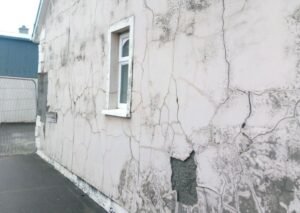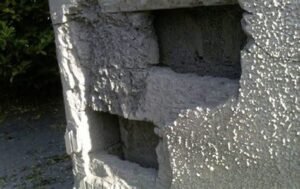What’s Behind the Mica Protests in Dublin?

If the phrase “Mica redress” had not yet come your way this year, then you will have likely heard all about it by now after a demonstration was held in the nation’s capital last Friday, the 9th of October. It is clear that it is an issue that has inflamed the passions of a vocal group of the population, but if last Friday’s protest in Dublin was your first time really hearing about the controversy which has affected so many in the north west of the country then you may have some questions.

What is Mica?
Mica is a type of mineral which is formed in part by aluminium and potassium. It is also known as ‘muscovite mica’ and ‘isinglass’, but ‘mica’ is the name by which it has been known in Ireland, and particularly is the term that has been consistently used by campaign groups.
Mica has a number of uses, particularly as an insulator because of its high heat resistance, It can also be used as a way to add a ‘shine’ effect to paint and even some cosmetics. When combined with water it can be made to form thin transparent sheets which residents of medieval Moscow were able to use as window panes- the reason it is sometimes known as ‘muscovite mica’.
However mica is not a universally useful mineral. When large amounts of the mica mineral make their way into building blocks they attract moisture from the air and create a “freeze/thaw” effect which causes the bricks to crumble drastically after a certain period of time, generally around five years.
When was its effect first noticed in Ireland?
Because mica regularly shows up in quarries used to extract the rocks that make building bricks, a very low trace of the mineral is often detected in building block materials. This small amount can sometimes be unavoidable, and in Ireland measures were put in place in 1949 so that regulations would not permit more than 1% of building bricks to be made up of mica. EU legislation which regulates the quality of construction materials in member states also exists to try and ensure high-standards

In spite of these measures, home owners in county Donegal who were living in properties that had been built roughly between 1980 up to as recently as 2011 began to notice alarming signs of cracking and crumbling in the structure of their homes. In 2016 as many as 2,000 private home owners had registered themselves with an organisation named Mica Action Group (MAG), which supports those affected and co-ordinates responses. In addition to private housing, the County Council of Donegal released figures in July of 2016 which suggested that government social housing had also been impacted by the faulty materials. Serious concerns about the presence of mica in buildings were first raised in the early 2010s, with MAG being formed in 2014 by individuals who were suffering as a result. In the past seven years, the numbers impacted have swelled, leading to the active and loud campaign underway in 2021.
Evidence of mica in buildings has not been limited to Donegal alone, with houses showing signs of the signature dramatic crumbling in counties such as Mayo, Sligo, and Clare. Residents of Northern Ireland have also been affected by the crisis.
Local Response
In county Donegal the aforementioned MAG was formed to try and advocate for compensation for those who had been impacted. It lobbies politicians on a local and national level and makes efforts to keep the issue in the public eye.
Members of the Donegal County Council from all of the major parties have come out this year in favour of a 100% redress for home owners who have suffered due to presence of the mineral in their homes. Notably vocal supporters have included Councillor Martin Farren of the Labour party, the now deceased Fine Gael Councillor Bernard McGuinness, and independent Councillor Frank Mc Brearty.
In May of this year protests were held locally in Donegal, with 10,000 people marching in Buncrana on the Inishowen peninsula, and a further 1,500 supporters marching in Letterkenny.
The Donegal County Council has seconded and supported five different motions regarding the mica issue, and come to the conclusion that a 100% redress is necessary to cover the mounting repair and rebuild costs.

What state are the affected houses in now?
The severity of the damage caused by mica has resulted in large horizontal cracks on exterior walls and long vertical cracks in the corners of buildings, reaching from top to bottom. This has significantly affected the integrity of the building, with some of the brick work crumbling to such an extent that it is possible to dislodge it with bare hands.
The state of the cracking in these buildings has allowed dampness and draughts inside, with the dampness naturally further contributing to the problem. A number of the properties can no longer be lived in, adding the cost of finding accommodation to the stress homeowners are facing.
What are the protestor’s demands?
On Friday the 8th of October over 12,000 mica protestors landed in the capital, having been brought from Donegal in a convoy of busses for the largest weekday protest the city had seen in years. They marched along the River Liffey to Customs House, the seat of the Department of Housing.
What were their demands?
100% redress and nothing less is the goal. Last January the government unveiled the Defective Blocks Scheme, which would cover as much as 90% of the cost for fixing mica-damaged buildings. Campaigners have dismissed this move as not being enough, given that it will still leave a considerable bill for the impacted. Furthermore, there has been outrage over the fact that applying for the scheme requires paying engineers to complete a survey of the property in question, which can cost up to €5,000. For some families this is simply out of the question in terms of affordability.
Currently the cost of completely rebuilding the affected homes comes to €1 billion, and it is thought that this money will be raised through taxes. The annual budget, which was released this week, allowed €20 million to tackle the crisis, a figure which was slammed by opposition parties such as Sinn Féin as not being enough.
One thing is for certain, if the government in Dublin cannot find a solution acceptable to the victims of the mica crisis then all coalition parties risk saying goodbye to their seats not only in Donegal, but along much of the West coast as well. For the victims themselves, Christmas is looming and they are desperate to celebrate the holiday in their homes.